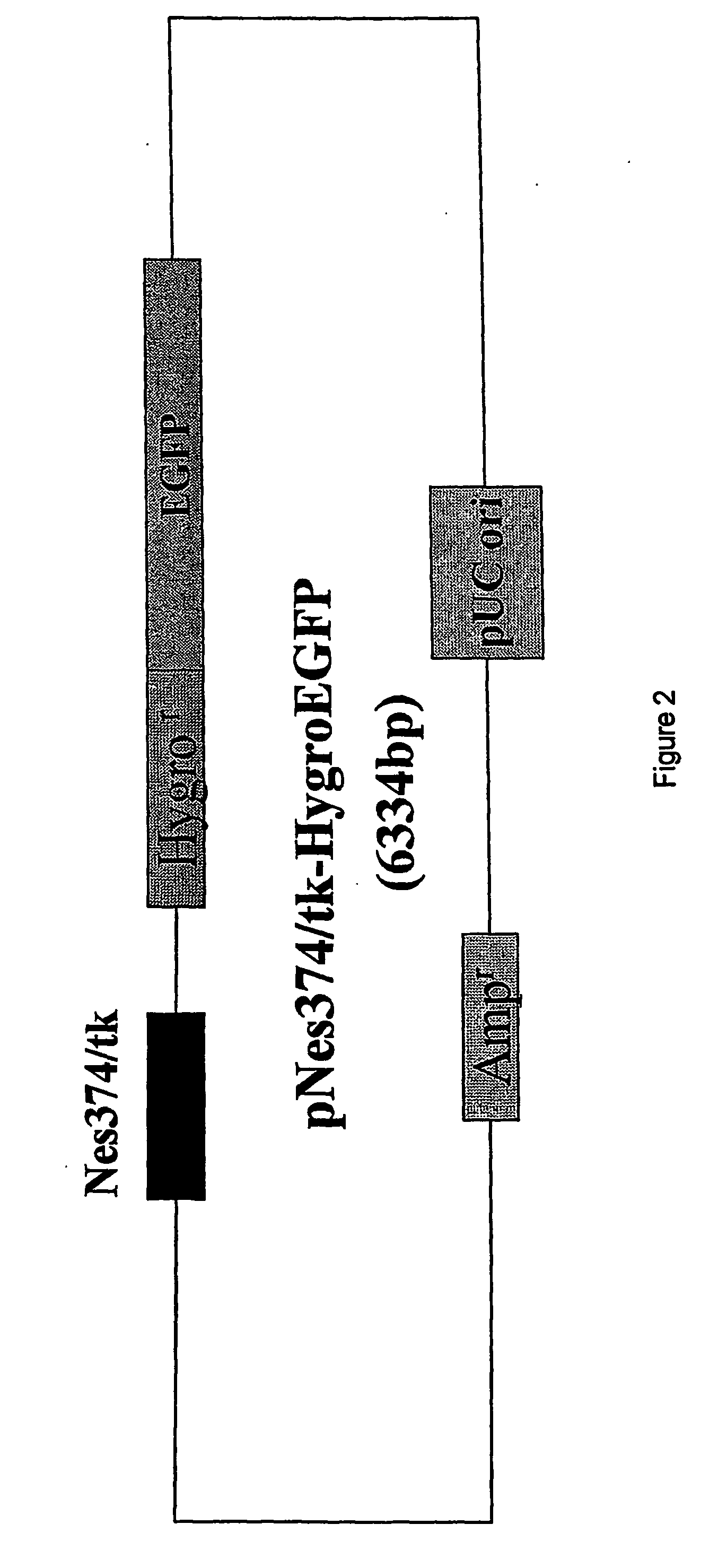Promoters to control cell differentiation
a technology of pro-cell differentiation and pro-cell differentiation, applied in the direction of transferases, drug compositions, genetic material ingredients, etc., can solve the problem of unregulated cell division and must be switched off, and achieve the effect of preventing unregulated expression of the oncogen
- Summary
- Abstract
- Description
- Claims
- Application Information
AI Technical Summary
Benefits of technology
Problems solved by technology
Method used
Image
Examples
example
[0046] In this Example, the regulation of Nes714 / tk and Nes374 / tk promoters in neural precursor cells is provided.
[0047] Nes714 / tk and Nes374 / tk promoters were constructed with green fluorescent protein (GFP) acting as a reporter gene, and hygromycin-resistance gene (Hygror) functions as a selection marker (see FIG. 1 and FIG. 2). Nes714 / tk and Nes374 / tk fragments were isolated from pNes714 / tk-LacZ and pNes374 / tk-LacZ constructs (Lothian et al., Eur. J. Neurosci, 1997; 9: 452-462 and Lothian, et al., 1999, supra) by Not I and Hind III restriction digestion. The pHygEGFP construct (Clontech) was digested with Bgl II and Nhe I to remove the CMV promoter. All three fragments, Nes714 / tk, Nes374 / tk and pHygEGFP were treated with T4 DNA polymerase to generate blunt-ends. pNes714 / tk-HygroGFP and pNes374 / tk-HygroEGFP constructs were generated by ligating Nes714 / tk and Nes374 / tk fragments into the blunt-end (Bgl II and Nhe I sites) of pHygEGFP.
[0048] Constructs of the pNes714 / tk-HygroGFP a...
PUM
| Property | Measurement | Unit |
|---|---|---|
| temperature | aaaaa | aaaaa |
| pH | aaaaa | aaaaa |
| permissive temperature | aaaaa | aaaaa |
Abstract
Description
Claims
Application Information
 Login to View More
Login to View More - R&D
- Intellectual Property
- Life Sciences
- Materials
- Tech Scout
- Unparalleled Data Quality
- Higher Quality Content
- 60% Fewer Hallucinations
Browse by: Latest US Patents, China's latest patents, Technical Efficacy Thesaurus, Application Domain, Technology Topic, Popular Technical Reports.
© 2025 PatSnap. All rights reserved.Legal|Privacy policy|Modern Slavery Act Transparency Statement|Sitemap|About US| Contact US: help@patsnap.com



